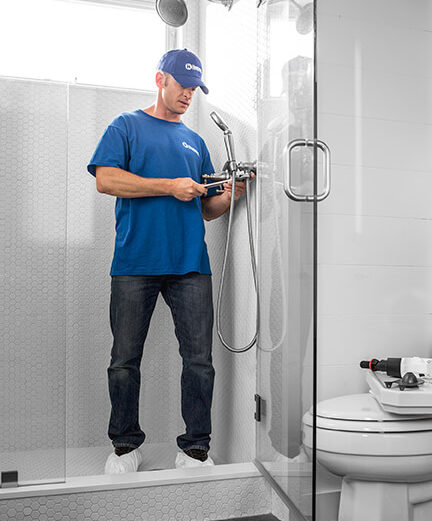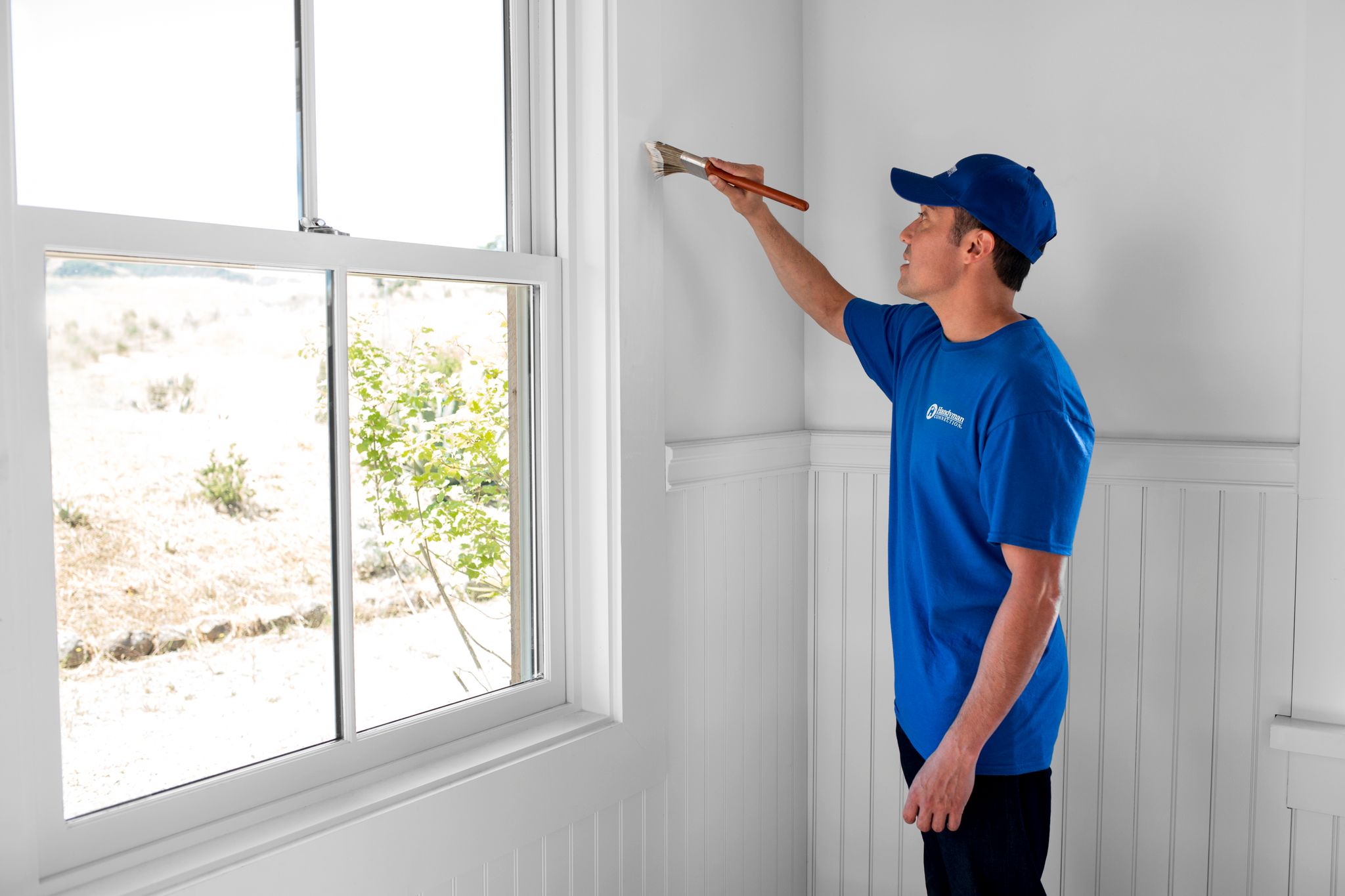We offer a wide range of services for that fresh look, or just maintenance or updates to keep your home functioning and safe. Regardless of the size of the job, we have a craftsman that can tackle it.

Home Improvement / March 17, 2021

There are two primary types of interior paints; oil and water based. Oil was the predominant paint of years past and is considered more durable than water-based paint so is still often preferred for interior trim, doors, paneling or smoke damaged walls. Oil-based also out performs in lower temperatures, and its application can be smoother, covers better and will help hide small imperfections. Oil based can also be applied to “dirty” surfaces and may give you a richer color tone. However, convenience goes to water-based paints which are much easier to clean up after use, dry much faster, have much less VOCs (Volatile Organic Compounds) when compared to oil-based paints which tend to have much stronger odor’s and make them a hazardous waste for disposal.
Once you have established the base of paint you would prefer, it is time to decide on the finish. There are 5 different types of paint finishes. These are flat, eggshell, satin, semi-gloss and gloss. The selection really depends on the finish you desire, although finish should also be considered for the type of location and the paint properties that are needed.
Flat/Matte, eggshell and satin are best used for interior walls. Flat paint tends to be the least hard wearing and is not recommended for areas with high humidity like bathrooms and kitchens. Flat will be better in hiding slight imperfections, whereas eggshell and satin are for surfaces that may require better definition, need wipe downs more often, or are likely to be exposed to humidity. Since Satin has a slightly higher gloss than eggshell it has improved stain resistance and durability and is considered the best all round interior paint. Semi-Gloss and gloss are more often used for trim and woodwork. One should also remember the ceiling, it can of course be painted the same color as the walls, but for the best contrast and light reflection the use of a manufacturers’ white ceiling paint maybe best. Interior and exterior paints are designed for these respective locations and should not be interchanged.
Much like buying a house, things to consider in your paint selection decision is location, location, location. Flat/Matte paint has no sheen and is best used in low traffic areas and where reflection might be an annoyance, bedrooms and media rooms are good examples. Eggshell is better for living areas where there is moderate traffic and wall contact. Satin has a higher gloss than eggshell and improves durability for walls and is good for higher traffic areas. It performs much better in bathroom and kitchens and is generally considered the best all-round interior finish for walls. Semi-gloss and gloss are the best option for contact surfaces such as trim and doors, although they can also be used for walls as a well, should the finish dictate its selection.
Paint swatches are a good place to start in color and finish but are often too small to judge how they will look on the wall. Most suppliers do offer small paint pot sample sizes which allow a larger area to be painted to provide a better sense of whether a particular color will provide the desired result. Some paint producers also provide larger squares that can be temporarily stuck on the wall, that help with visualization.
The best advice when selecting equipment for paint projects is buy the best your budget will allow. Basic supplies that will allow for the best results would start with the following. Select a well-constructed hand roller, it will provide years of use. Choose the roller nap that matches the surface type of wall from smooth to rough. Again, a decent quality tray is a good idea, but also consider the use of tray inserts as they save significant time on clean up as they can be thrown away and the tray remains untouched ready for the next color or use, saving the need for multiple trays. Masking tape provides professional edges and is well worth using as it will save you far more time avoiding the need to fix bad edges. Cheap brushes are ok for small projects or when it is easier to dispose of the brush after the job, but always pay as much as you can, brush quality makes a considerable difference to the quality of finish, especially on trim and woodwork and again if looked after will last years! Edge painting tools like paint pads with a roller edge allow for a profession cut in against ceilings and trim and often eliminate the need to mask while significantly speeding the process when compared to a brush. A step ladder is the safest and most controlled way of getting to the upper part of the wall. Last but not least are rags, drop cloths, paper and plastic sheeting allow protection of the work area not to be painted.
The rule of thumb is that a quality paint will cover approximately 200 square feet. Experience has shown that the vast majority of paints will not cover in one coat especially when covering a darker color, the use of a primer and/or two coats ensures that you aren’t left with a patchy appearance.
An inexpensive Tyvek painting coverall and boot covers are great to prevent you and your clothes and shoes from paint, a cap will help to keep paint out of your hair and a sturdy pair of shoes are especially beneficial for when going up and down step ladders.
Primer is an essential product for applying paint to raw surfaces or when repainting an existing painted surface. It establishes the bond between the substrate and the top coat and if not applied can lead to disappointment by the top coat either being easily scratched off or begins to lift. Primers often reduce the amount of top coat used, especially when covering a darker color. In more severe contrasts or stains, a stain block/primer is often used to prevent bleed through, or reduce the number of top coats to cover a darker color by establishing an even base. New latex products do come in a primer/top coat combination, but some research with your paint supplier will help determine the best application of these products especially if it has been a number of years since it was previously painted.
Keep your work area clean, organized and free of obstacles. Trip hazards will find you at the worst moment and an open area will allow you to be efficient in the painting process.
A second in precaution with drop cloths and/or plastic and paper sheeting will save you a lifetime in clean up from roller spray, drips and accidents. Establish a work surface to put your tools, paints and trays so they are off the ground and accessible. Best to always assume paint will be spilled.
If you are not sure whether the previous paint is oil based, use a cotton ball soaked in rubbing alcohol, if paint is present on the cotton it is latex, if not you will need to apply an oil-based primer.
Always remove light switches and outlets. It’s quicker, neater and prevents paint build up at the cover plate edges.
For longer paint jobs, a good tip is to wrap the roller nap and brushes in an individual plastic bag at the end of the day and put them in the freezer. This saves on cleaning the roller nap or unnecessary replacement should cleaning not be an option. This practice is best used when painting large areas of the same color.
From a safety perspective, if your home was built prior to 1978, there is a strong likelihood that lead paint was used. Test kits can be purchased as a quick check, but if lead paint is present, it is strongly recommended that this paint be removed by a certified professional. Lead mitigation is essential to prevent lead particles being released, absorbed and/or ingested. Painting over this paint may make it captive, but should a child or pet chew or scratch the paint off, it is possible that lead poisoning could occur. Go to Renovate Right at the EPA website epa.gov/getleadsafe and it will provide you with further information. Remember it is the law that any contractor who disturbs lead paint during remodeling must be trained in its remediation, so always check their certification.